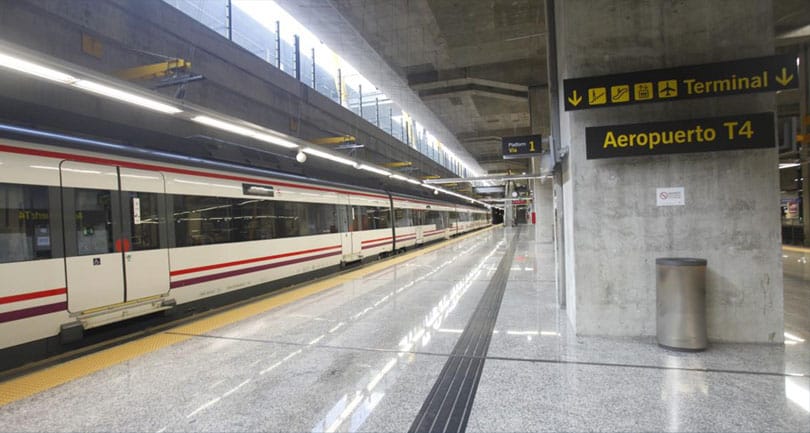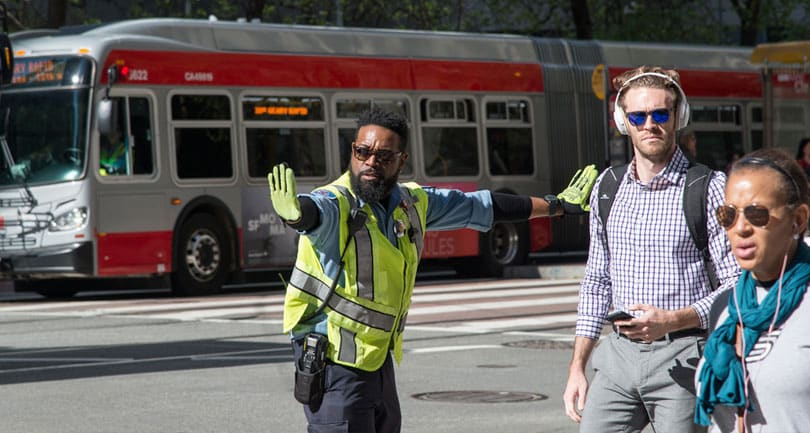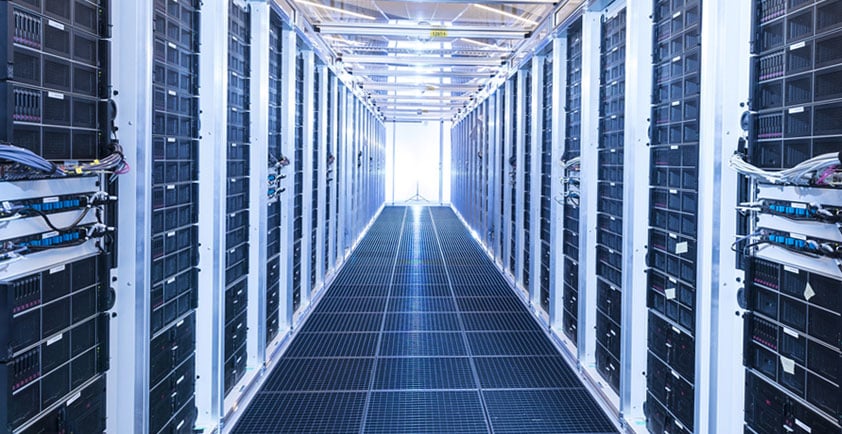

TRANSFORMING THE WAY WE GET AROUND
Cisco's Country Digital Acceleration program drives the next wave in transportation
On a planet where population is surging, resources are strained, and climate is warming, only the best transportation solutions will do. But whether getting across town or spanning an ocean, too many journeys are still fraught with frustration and inefficiency — or worse.
That’s where digital transformation comes in. Cisco’s Country Digital Acceleration (CDA) is helping government leaders to solve some of the biggest societal problems. And a core goal is enabling a digital revolution in transportation — in which subway slowdowns and roadway logjams are all but eliminated. And travel of all kinds is safer, cleaner, and a whole lot less aggravating.
Network technologies are the foundation of this revolution. Cisco is powering the Internet for the Future, and our combination of speed, bandwidth, security, and ease of operation is unsurpassed. So connecting people, things, and data is becoming more seamless than ever.
But adopting innovative technologies — everything from artificial intelligence and the Internet of Things (IoT) to intent-based networking and 5G — is challenging. Especially when millions of travelers, endless endpoints, and complex systems all come together.
CDA is harnessing the power of these game-changing technologies — and simplifying the process of adopting them. By working in close collaboration with governments and public sector organizations, CDA helps them identify and advance their goals for digital transformation. While helping to solve the problems that keep them up at night.
Along the way, CDA is transforming lives and creating a more inclusive future across the globe.
In the transportation space, CDA is improving the efficiency of assets and systems; enhancing the travel experience; reducing carbon emissions; and ensuring that all data is transferred securely across networks. Among the wide range of positive outcomes are growth and an enhanced quality of life. Cities and communities that offer great travel experiences draw investment, business, and tourism.
“Through Country Digital Acceleration,” Cisco CEO Chuck Robbins said, “Cisco has the opportunity to positively impact communities, governments, and businesses around the world.”
CDA is currently driving 33 major transportation initiatives around the globe. These include airports, roadways, rail systems, and maritime ports. The challenges vary but the overarching goal is the same: to move people, vehicles, and freight in the fastest, safest, and cleanest ways possible. And the way to do that is by leveraging massive amounts of data and connected devices into a seamless, secure platform enabling innovative new solutions.


Madrid Metro — the best subway experience
Madrid is justifiably proud of a gleaming metro rail system that’s 100 years old but continues to serve more than 650 million passengers a year across a sprawling metropolis. The third largest urban rail system in Europe, Madrid Metro is nevertheless pressed to accommodate even more passengers — as it strives to meet changing passenger expectations for the best travel experience possible.
The increased pressure also stems from new EU standards for lower carbon emissions, which have pressed the Spanish government to cut road traffic substantially. Naturally, the focus is shifting to Madrid Metro, since it is seen as a vastly preferred solution to move people in, out, and around the city with the least amount of emissions. And digital transformation is the best way to heighten efficiency in public transit systems.
Cisco’s CDA program — called “Digitaliza” in Spain — has helped every step of the way, beginning with a complete refresh of the network infrastructure on Madrid Metro’s Line 8, with its eight stations running from Nuevos Ministerios to Madrid Airport. The goal was to drive improvements across four main areas of focus: operations, security, passengers, and stations.
With new Cisco routers and switches in place, Madrid Metro gained a much higher level of visibility into all assets on the line, tracking trains, switches, signals, tracks, and, of course, people in precise ways. IoT sensors and IP video surveillance provide critical real-time insights that empower Madrid Metro’s 7,000 employees in all-new ways.
The bottom line? More efficient movement of trains, enhanced safety, and fewer equipment failures. Not to mention, satisfied passengers.
Public transportation, however, is a high-profile target for cybercriminals. As the world’s largest security vendor, Cisco brings rock-solid security to Madrid Metro with an array of solutions covering every endpoint, from the data center to the edge of the network. Intent-based networking offers unprecedented visibility and lightning-fast responses, using machine learning to comb through torrents of data and counter threats before they cause damage.


Additional improvements in the passenger experience are being piloted, and Madid Metro is well on its way to reaching a goal of 5.5 percent more passengers per year.
“Cisco’s Country Digital Acceleration reinforces Cisco commitment to helping public and private organizations realize its full digital potential,” said Andreu Vilamitjana, Cisco Spain General Manager. “In close collaboration with Cisco and our partners, Metro de Madrid is reinventing its network as the digitization foundation on which to build innovative services to citizens. As a result, Madrid residents and visitors will be traveling — and breathing — a lot easier.”
Madrid Metro is just one element in a country-wide digitization program supported by the Spanish government and CDA; moving forward, it will include urban innovation, healthcare, education, and sustainability as core goals.
“Our aim is to place Spain as a reference in Europe in digital transformation, contribute to economic growth and advance towards a more inclusive society,” said Santiago Solanas, vice president, Southern Europe, Cisco. “The pillars of the digitalization program have been designed to help our country, cities, companies and the entire innovation ecosystem in capturing the maximum value from digitization.”


San Francisco MTA — Traffic Safety in the Golden Gate City
In a bustling city like San Francisco, cars, trucks, light rail, cyclists, and pedestrians all vie for position. Keeping it all running smoothly and, above all, safely, is a constant concern, especially as road traffic and congestion continue to rise in the city.
Looking ahead, San Francisco MTA is working with Cisco to create and test innovative technology solutions. These support the city’s Vision Zero commitment to eliminating traffic-related deaths by 2024, while allowing pedestrians and cyclists to safely navigate the streets without the fear of motorists.
Intersections are a main area of focus. After all, as any driver or pedestrian can attest, inefficiency, waste, and even worse, danger are built into many roadway intersections, as drivers wait, and wait, wasting fuel and emitting carbon all the while, then scramble forward in a mad rush in different directions.
“Speed, failure to yield to pedestrians, and unsafe left turns at intersections are among the chief causes of injuries,” said Lisa Walton, Chief Technology Officer at SFMTA. “Education is an important part of the effort to make San Francisco safer, more connected and more sustainable for all citizens. But technology is equally critical. That’s where Cisco is helping us.”
A key part of Cisco CDA’s collaboration with San Francisco was to deploy multimodal intelligent traffic signal system (MMITSS) to networked intersections. This includes Cisco’s IoT networking and Edge Intelligence along with DSRC (dedicated short-range communication) and LiDAR (light detection and ranging) sensor technology for precise, nearly instantaneous detection of vehicles, light rail, people, bikes, and scooters.
The proof-of-concept test site was located on several intersections around 3rd Street and Terry A. Francois Boulevard, between 16th Street and Mission Bay Boulevard North. And the system was designed with critical outcomes in mind: increasing safety, improving public transit speeds, reducing signal delays, and cutting idle-time and greenhouse emissions.
In addition, new insights on pedestrian behavior and movement were a key goal. So monitoring not just roadways but activity along curbs and walkways was an important area of focus.
“Different modes of transportation were rarely designed to interact safely or efficiently,” said Victoria Lee, Cisco’s Smart Cities & Transportation Leader in California. “At Cisco we simplify the integration of different systems. So whether it’s cars, bikes, pedestrians, or rail, end users can monitor and manage complex situations in real time.”
By tying together and connecting disparate elements, the proof-of-concept pilot was able to capture, track, and analyze vehicles with 93 percent accuracy, take measurements 10 times per second, and attain position accuracy within one foot. Across the network, more than 30 million messages per week were transported to the data center, and stored (including compute power and processing at the edge) — all with low latency.


United Kingdom — Driving into the future with UK Smart Mobility Living Lab
Cars are a mixed blessing. In the last hundred years they have opened up possibilities that would have been unimaginable to our ancestors. But they’ve also had a profound impact on everything from the environment and public safety to urban design and geopolitics.
Bringing new innovation to automobiles is therefore a key concern in this century. Thankfully, there’s no shortage of new technologies, including electric engines, high-capacity batteries, and self-driving vehicles.
The UK’s Smart Mobility Living Lab (SMLL) is an advanced and scalable urban testbed for a wide range of mobility solutions. It welcomes original equipment manufacturers, tech companies, local and transportation authorities, and others to explore transportation challenges in a real-world setting.
In partnership with Cisco, SMLL is focusing on the role that Connected Autonomous Vehicles (CAVs) will play in the future of mobility. The effort centers on two locations: London’s Olympic Park and the Royal Borough of Greenwich.
“SMLL is a key part of the UK Government’s strategy to enable a better way of moving people and goods, and we are delighted to be the technology lead for this testbed”, said Maria Hernandez, the Head of Innovation for UKI at Cisco. “SMLL is delivering 24km of connected infrastructure on private and public roads across London, with 200 monitoring columns, 273 HD cameras, 32 V2X sites and much more. This testbed will help us shape the future of mobility, in the most complex and urban setting of all.”
Of course, CAVs demand rock-solid connectivity to ensure safety and reliability. Network downtime or dead spots are simply not an option in fast-moving environments where machines must respond to the unexpected. So Cisco technologies — including advanced roadside video monitors, machine learning, routers, switches, and other infrastructure — are enabling a network that promises pinpoint location accuracy, lightning-fast communications, and the highest levels of security.
Using machine learning, the system navigates highly dynamic situations as its CAVs maneuver through junctions, bus stops, and heavy traffic. Beyond ingesting and responding to real-time information, the CAVs can also share with other cars, networks, and drivers — for example, when accidents, weather conditions, or other traffic issues arise.
Given that 90 percent of all traffic accidents are caused by human error, CAVs can play a significant role in making our roads safer. They can also spur new business models around ride sharing that will relieve congestion and parking challenges, while cutting carbon emissions.
The City of London has made road safety a major priority of its mandate. In fact, Mayor Sadiq Khan has announced a plan to reduce traffic fatalities over the next decade, with the ultimate goal of eliminating deaths entirely by 2041.
Between SMLL and Cisco CDA, we are paving the way for a safer, more efficient way to get around cities.
“Cisco has provided a wide range of cutting-edge technology and equipment including roadside, network and core data management and process,” said Paul Zanelli, director of commercial ventures at TRL, a transportation consultancy that also partnered on the project. “Cisco’s involvement has ensured that SMLL is the most advanced real-work test bed for future mobility solutions in the world. Cisco has also led the delivery of the complex build program that involves multiple stakeholders across government, industry and academia. Cisco will continue to be a core partner of SMLL into the future.”
Author: Guy Diedrich, Cisco Global Innovation Officer
Credits - The Network













